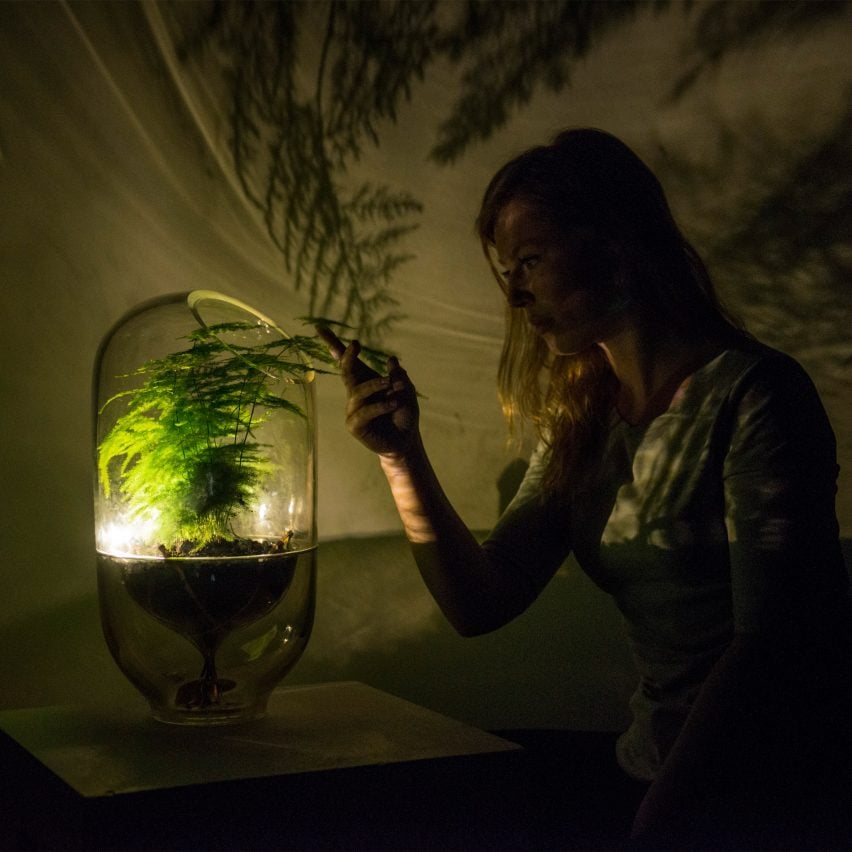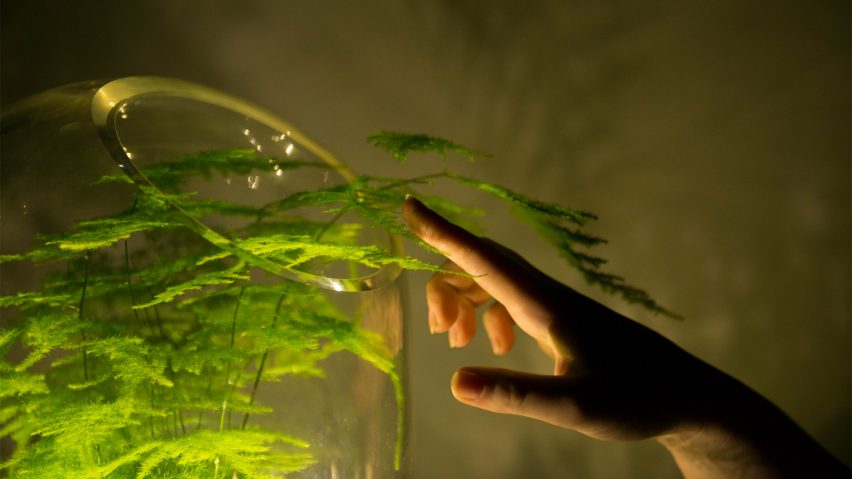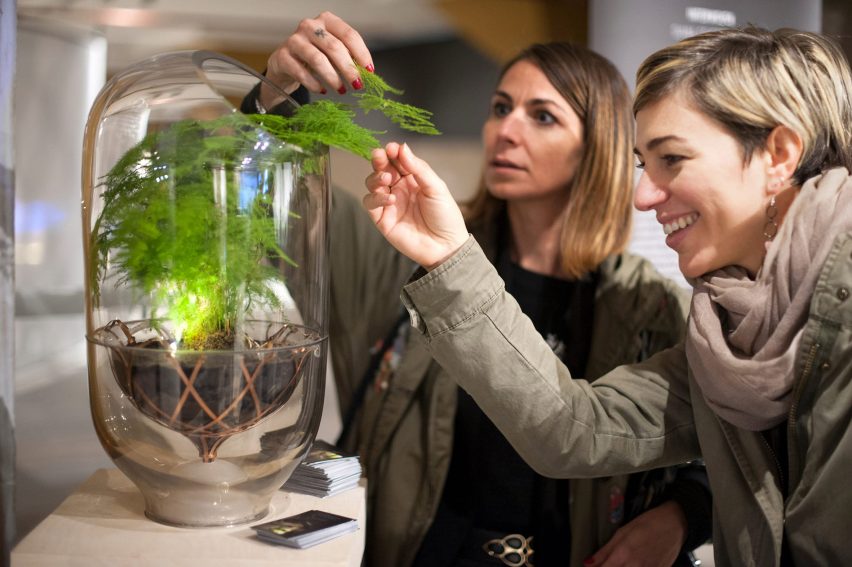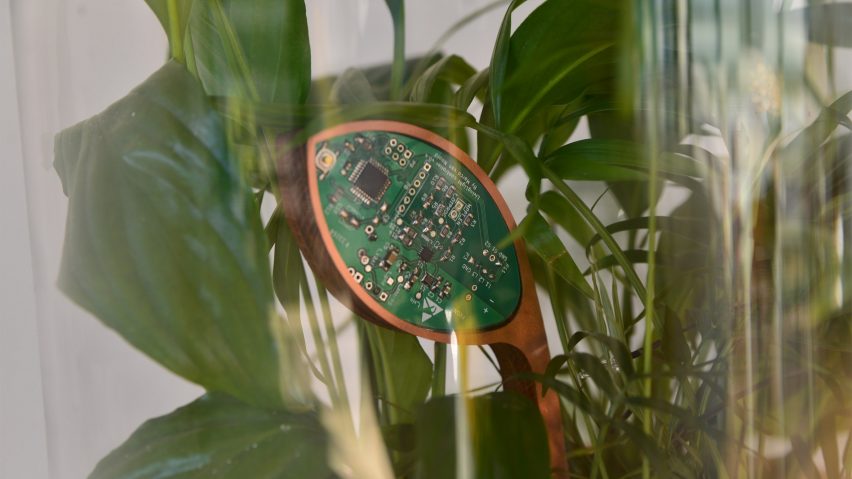Living Light is an off-grid lamp powered by photosynthesis
Dutch designer Ermi van Oers has created a lamp that uses a living plant to generate its own electricity – and plans to scale up the technology to power entire smart cities.
Presented at Dutch Design Week, the Living Light uses microorganisms to convert the chemical energy that a plant naturally produces during photosynthesis into an electric current.
Van Oers designed the lamp to be fully self-sufficient, so it can function off-grid, rather than needing to be plugged into an electrical socket.

She has already began to apply the technology – known as microbial energy – to public spaces, and is collaborating with the municipality of Rotterdam to light up one of its parks.
"The potential is huge," she told Dezeen. "Street lights could be connected to trees. Forests could become power plants. Rice fields in Indonesia could produce food and electricity for the local population."

The Living Light encases a plant inside a glass tube. As the plant photosynthesises, it releases organic compounds into a soil chamber below.
The organic matter is broken down by bacteria fostered through a microbial fuel cell – a system that mimics bacterial interactions found in nature. When this happens, electrons are created and transported away from the soil.
The electric current is passed along a wire and fed into a ring fitted with LEDs. These light up when a user touches the plant's leaves.
Van Oers claims that future cities could be powered exclusively by plants in a similar way, by replacing the electric grid with a more sustainable microbial energy system.

Sustainability was a major theme at this year's Dutch Design Week, where designers experimented with waste materials and energy alternatives in response to the growing threat of climate change. This topic was also addressed in a talk hosted by Dezeen, as part of our Good Design for a Bad World initiative.
Van Oers believes there are lots of opportunities for designers to change the status quo.
"I hope we come to a point where every plant pot is provided with this technology, and we don't know any better than that plants are part of our energy system," she said.
"Nature will get a higher economical value and we will start making more green places so that biodiversity can flourish, while lowering greenhouse gas emissions at the same time."

However designer acknowledges that the technology is still new, and that the Living Light can only produce a small amount of energy in its current form.
The plant photosynthesises around the clock. But the lamp takes a day to produce enough energy for half an hour's charge – although this can vary depending on the condition of the plant.
Van Oers first developed the technology with a research group called Plant-e in 2016, and plans to roll out 50 lamps by early next year.
Living Light was presented at Veem during Dutch Design Week, which took place in Eindhoven last month. Dezeen hosted five Good Design for a Bad World talks during the week-long festival, on topics including pollution, politics and refugees.
Other projects shown at Dutch Design Week that tackle big problem facing the world include a new material created from waste plastic and scarves patterned with ink derived from air pollution.